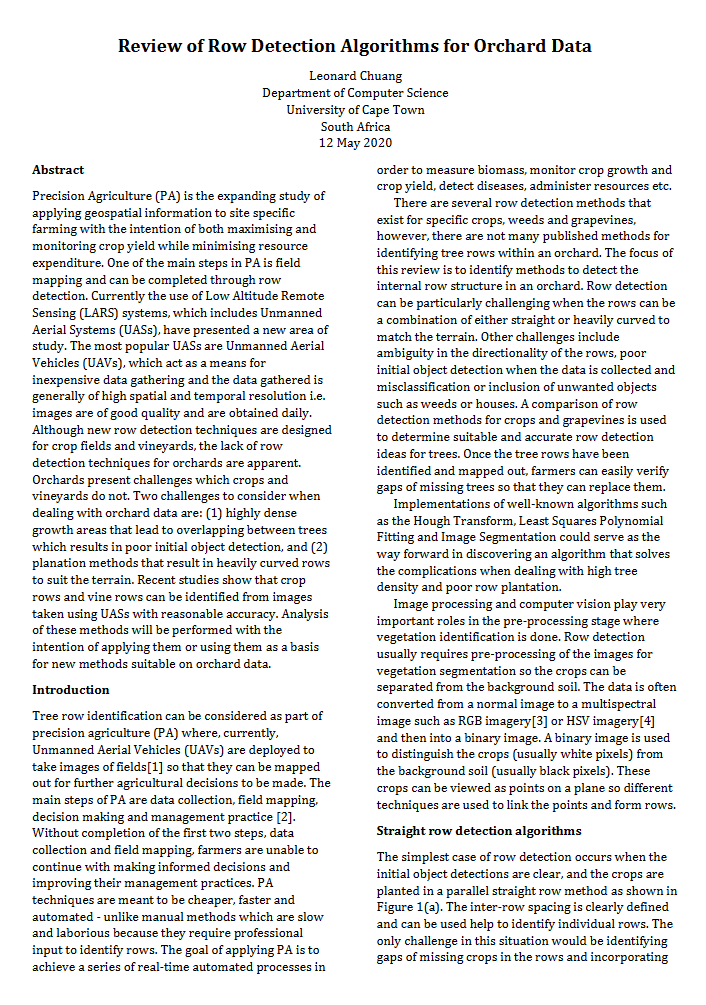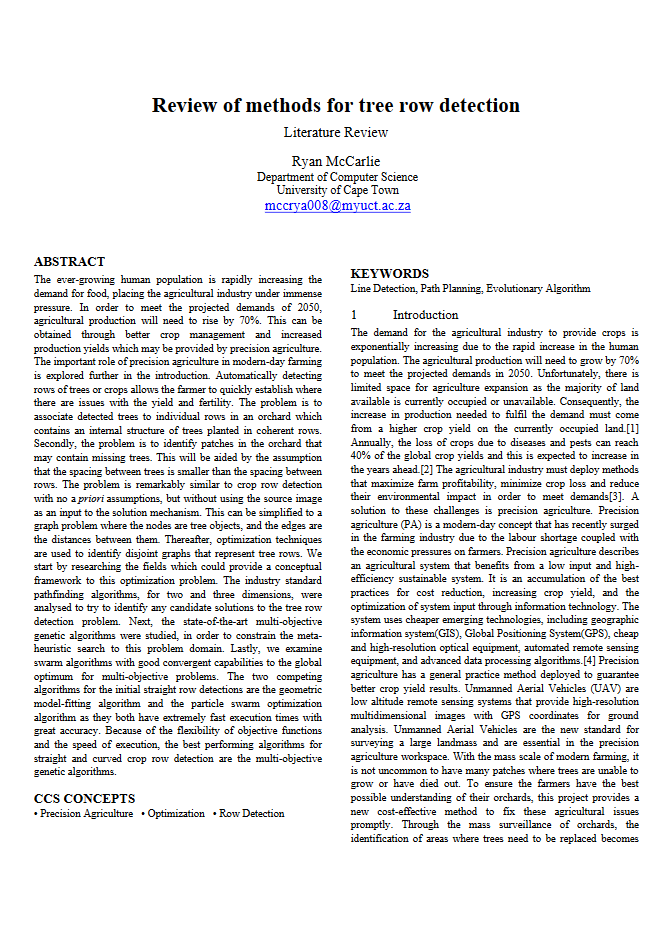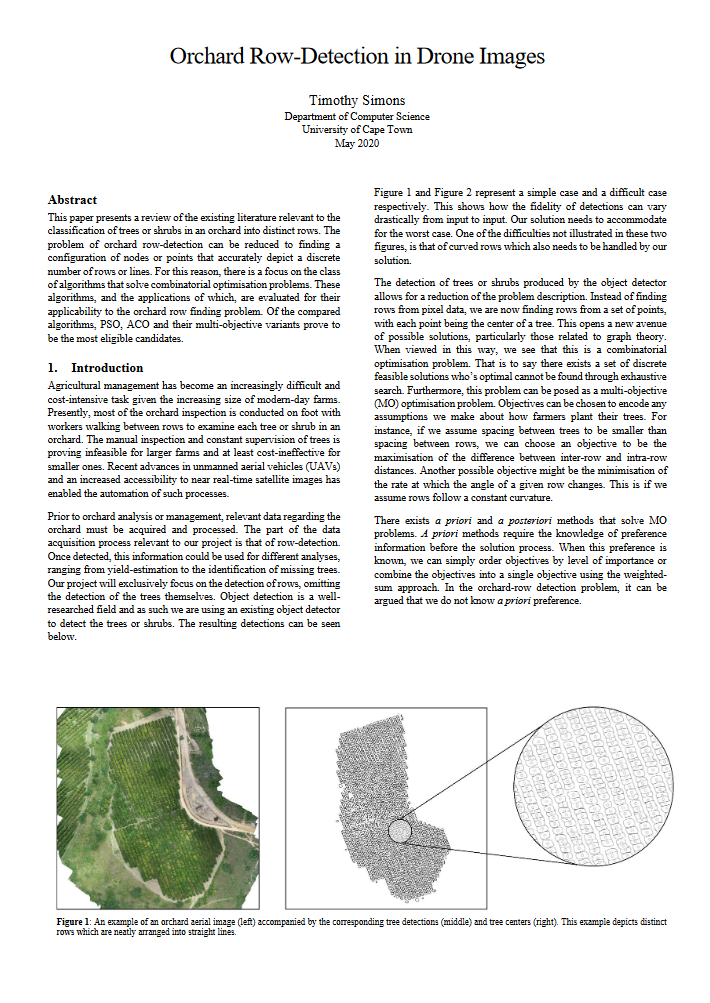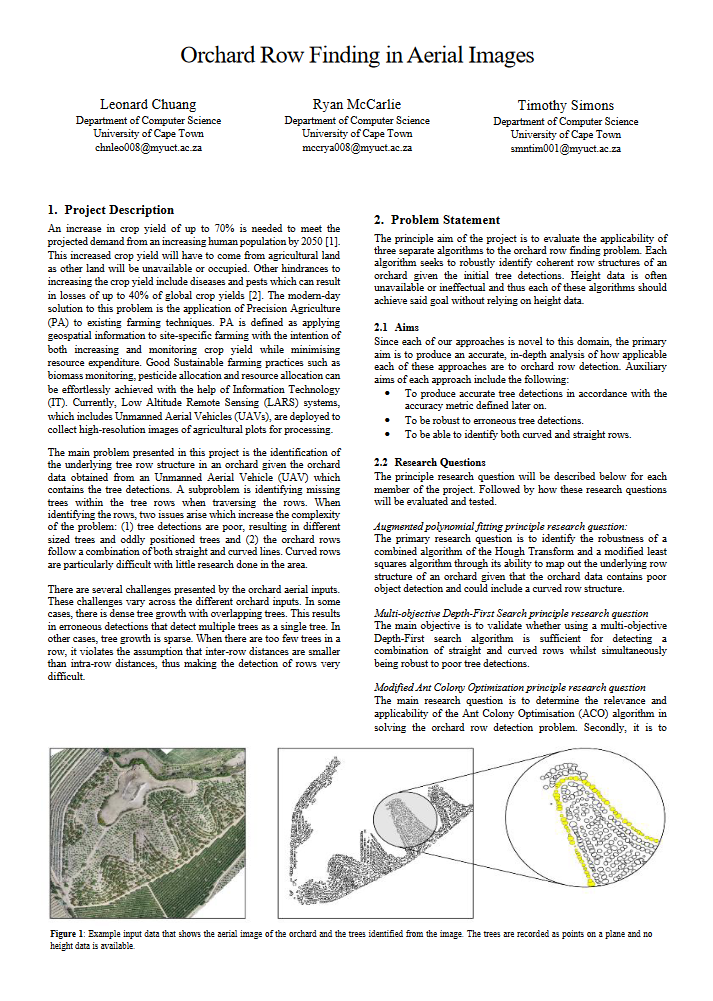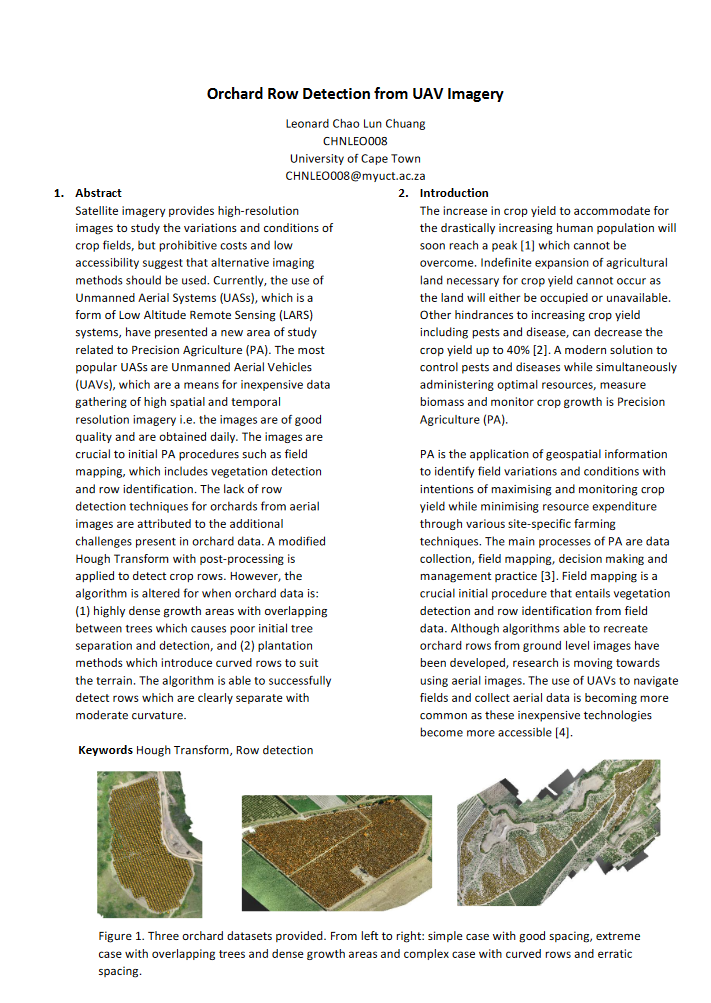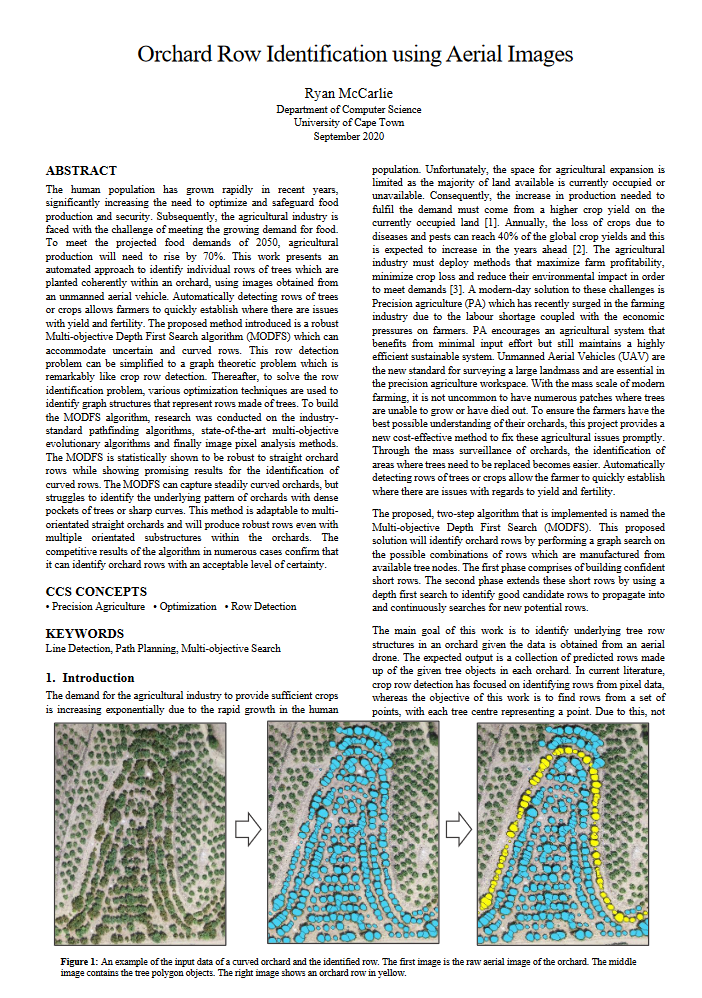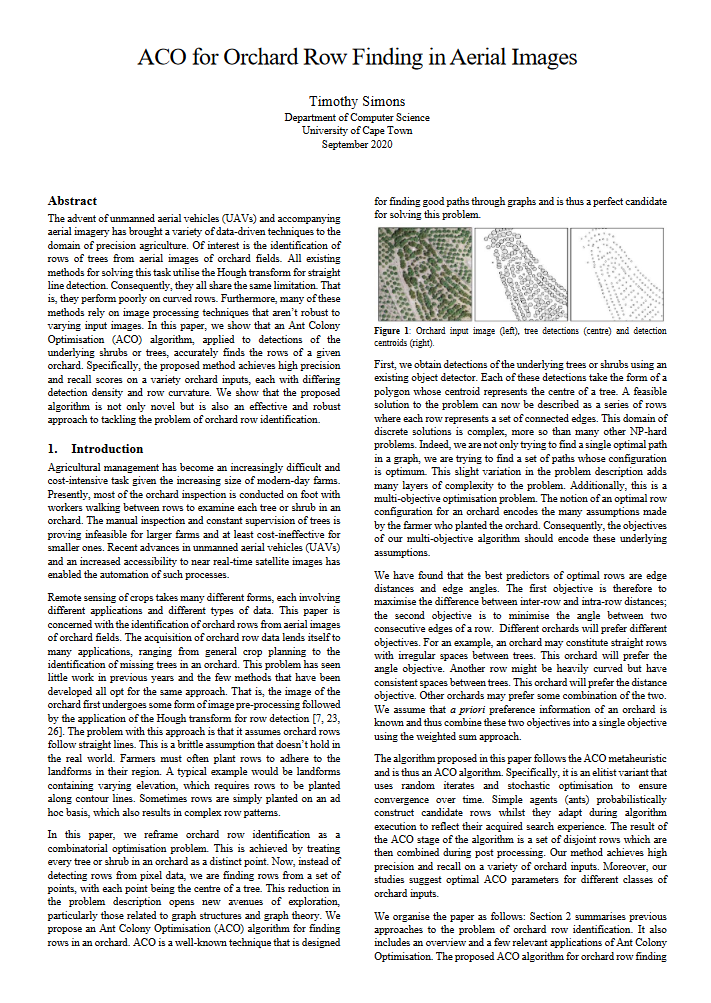Overview
The human population has grown rapidly in recent years, significantly increasing the need to optimize and safeguard food production and security. Subsequently, the agricultural industry is faced with the challenge of meeting the growing demand for food. To meet the projected food demands of 2050, agricultural production will need to rise by 70%. This work presents an automated approach to detect rows of trees or crops to allow farmers to quickly establish where there are issues with yield and fertility.
The main goal of our work is to identify underlying tree row structures using images obtained from an unmanned aerial vehicle (UAV). When identifying the rows, two main issues arise which increase the complexity of the problem. The first being that the orchard rows are planted in a combination of curved and straight-lines, with curved rows being particularly difficult to identify. The second problem being that the abundance of poorly classified trees leads to variations in tree size and positioning across the orchard.
There are several challenges presented by the orchard aerial inputs. These challenges vary across the different orchard inputs. In some cases, there is dense tree growth with overlapping trees. This results in erroneous detections that detect multiple trees as a single tree. In other cases, tree growth is sparse. When there are too few trees in a row, it violates the assumption that inter-row distances are smaller than intra-row distances, thus making the detection of rows very difficult. Unfortunately, tree height information and contour information were not consistently captured for all of the orchard inputs and was therefore not used in any of the implemented approaches.
The three proposed methods that were implemented to solve the row identification problem are explained in more detail below.

This figure shows example input data of the aerial image of the orchard (left figure) and the trees identified from the image (middle figure). The yellow highlighted trees indicate a possible row within the orchard (right figure).
Modified Hough Transform for Orchard Row Detection
In this paper, a modified Hough Transform is proposed as a solution to a orchard row identification problem for ochard data containing various features including curved rows and erratic spacing. The algorithm can correctly identify straight, moderately curved and quadratically curved rows with sufficient accuracy.
Multi-objective Depth First Search for Orchard Row Detection
In this paper, the results of applying the Multi-objective Depth First Search (MODFS) algorithm to the orchard row detection problem are discussed and evaluated. This method is shown to produce sufficiently accurate orchard row predictions for straight and slightly curved orchards. Additionally, the MODFS algorithm is robust to multi-orientated straight orchards.
ACO for Orchard Row Finding in Aerial Images
In this paper, we show that an Ant Colony Optimisation (ACO) algorithm, applied to detections of the underlying shrubs or trees, accurately finds the rows of a given orchard. Specifically, the proposed method achieves high precision and recall scores on a variety orchard inputs, each with differing detection density and row curvature. We show that the proposed algorithm is not only novel but is also an effective and robust approach to tackling the problem of orchard row identification.

Team Members
Leonard Chuang
chnleo008@myuct.ac.za
Ryan McCarlie
mccrya008@myuct.ac.za
Timothy Simons
smntim001@myuct.ac.za
Supervisor
A/Prof. Patrick Marais
